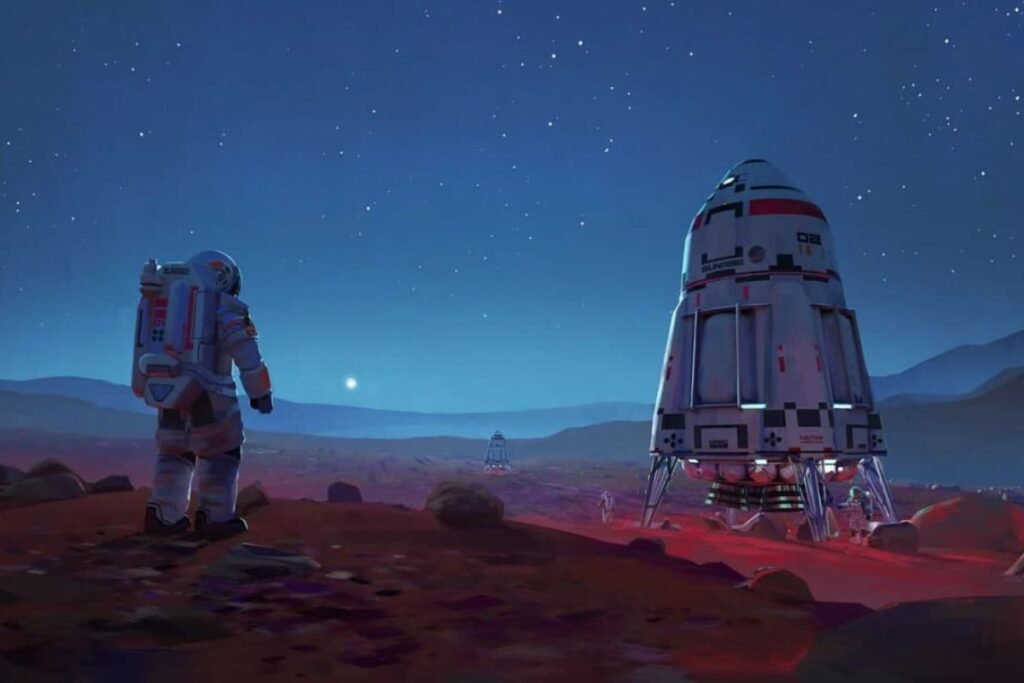Will Humans Be Able to Live in Mars in the Future, often referred to as the “Red Planet,” has captivated human imagination for centuries. It has been a subject of fascination for astronomers, scientists, and science fiction enthusiasts alike. The dream of humans living on Mars is no longer confined to the realms of fiction; it’s a subject of serious scientific inquiry.
The Martian Challenge: Harsh Conditions and Survival

Living on Mars is not a simple endeavor. The Martian environment is extremely harsh, with frigid temperatures, low atmospheric pressure, and high levels of radiation. It lacks a breathable atmosphere, and the surface is barren and desolate. To establish a sustainable human presence on Mars, several significant challenges must be overcome.
Breathing Easier: Atmospheric Challenges
One of the primary challenges of living on Mars is the lack of a breathable atmosphere. Mars has a very thin atmosphere composed mainly of carbon dioxide. To survive, humans would need a reliable source of oxygen. This could be achieved through various means, such as carrying oxygen from Earth or utilizing Martian resources to generate oxygen.
Keeping Warm: Extreme Temperatures

Mars experiences extreme temperature variations, with daytime temperatures reaching a maximum of about 70 degrees Fahrenheit (20 degrees Celsius) near the equator but dropping to as low as minus 195 degrees Fahrenheit (minus 125 degrees Celsius) during the night. To endure these temperature swings, advanced heating and insulation systems would be essential.
Radiation Hazards: Shielding Against Radiation
Mars lacks a protective magnetic field and thick atmosphere, which means its surface is bombarded with harmful cosmic and solar radiation. Prolonged exposure to this radiation can be lethal. Establishing shelters and habitats with effective radiation shielding is a critical aspect of Martian colonization.
Water, Water Everywhere? The Quest for Liquid Water
Water is essential for life, and finding a stable source of liquid water on Mars is a top priority. While there is evidence of frozen water on the planet, ensuring a continuous and accessible supply of liquid water is a complex challenge. Scientists are exploring various methods, including extracting water from Martian soil or importing it from Earth.
Food and Sustainability: Farming on Mars
To sustain a human population on Mars, agriculture will play a vital role. Growing crops in Martian soil, known as regolith, presents unique challenges due to its lack of essential nutrients and the need for controlled environments to protect against extreme conditions. Developing innovative farming techniques is a necessity.
The Future of Mars Exploration: Exciting Prospects
Despite the formidable challenges, there is growing enthusiasm for Martian exploration and colonization. Numerous space agencies and private companies are actively working on missions to send humans to Mars in the coming decades. These missions aim not only to conduct scientific research but also to pave the way for future human settlement.
Conclusion: From Dreams to Reality
In conclusion, Will Humans Be Able to Live in Mars the idea of humans living on Mars is no longer confined to the pages of science fiction. With advancements in space technology and a growing understanding of the challenges, the dream of establishing a sustainable human presence on the Red Planet is inching closer to reality. While there are formidable obstacles to overcome, the spirit of exploration and the human desire to push boundaries continue to drive us towards the possibility of a future on Mars.
You may also like:
- Samsung Galaxy Ring: A Revolution in Wearable Technology
- Unveiling Artificial Intelligence in 2024: Advances, Challenges, and the Future of AI
- Solar Shield in Space: A Bold Vision for Climate Change Mitigation
- Wind Trees: Transforming Urban Spaces with Renewable Energy
- Mastercard AI Revolution: A Leap in Fraud Detection
Source: Google Ideas

